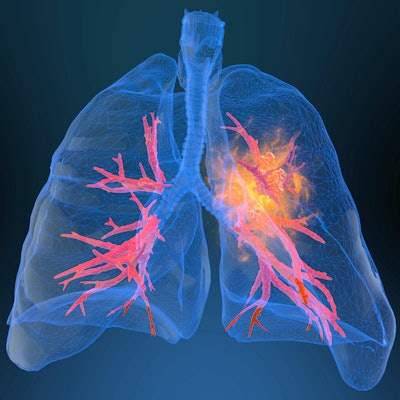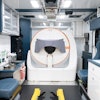
Lung cancer screening (LCS) rates returned to higher levels in 2021 when compared with 2019 but remain lower than other population-level cancer screening initiatives, particularly among Black individuals, a June 21 JAMA Network Open research letter reports.
The findings underscore the fact that continued research is needed to determine why this phenomenon persists and what factors come into play, such as smoking and screening stigma, wrote a team led by Kristin Maki, PhD, of Wayne State University School of Medicine in Detroit.
"Research to identify facilitators for LCS among persons who currently smoke is needed, including a focus on the role of stigma as a barrier to screening," the group noted.
Lung cancer screening is conducted using low-dose CT (LDCT). In 2021, the U.S. Preventive Services Task Force (USPSTF) lowered the starting age from 55 to 50 and adjusted smoking history from 30 pack years to 20 pack years, broadening the pool of individuals eligible for screening. Despite this, data from the 2019 Behavioral Risk Factor Surveillance System (BRFSS) showed that only 12.8% of eligible adults underwent lung cancer screening that year.
Maki's group sought to evaluate lung cancer screening rates, conducting a study that used data from the 2021 BRFSS from between January 2021 to January 2022 for four states: Maine, Michigan, New Jersey, and Rhode Island. The research included information from 112,399 individuals between the ages of 55 and 79 with at least a 30-pack-year smoking history who currently smoked or quit within the past 15 years. The investigators calculated the percentage of eligible participants who had undergone LDCT for lung cancer screening, taking demographic factors into account.
The team found that screening prevalence increased about 8% between 2019 and 2021, from 19.6% to 21.2%. It also found the following:
- Women were more likely than men to undergo lung cancer screening (22.6% compared with 4.4%).
- Rhode Island residents had higher screening rates (30.3%) compared with New Jersey residents, who had the lowest rate (17.5%).
- White individuals were more likely to undergo screening compared with their Black counterparts (21% compared with 16%).
- Patients with a primary care provider had higher screening rates compared to those who did not have one (22.2% vs. 7.6%).
- Former smokers were more likely to undergo screening than current smokers (25.3% compared with 17.7%).
There's no doubt about it: Lung cancer screening disparities continue, according to the team.
Disparities in LCS uptake among eligible adults remain and will likely continue [even as] ... the updated USPSTF recommendation increases the number of Black adults who are eligible for LCS," the authors concluded.





















